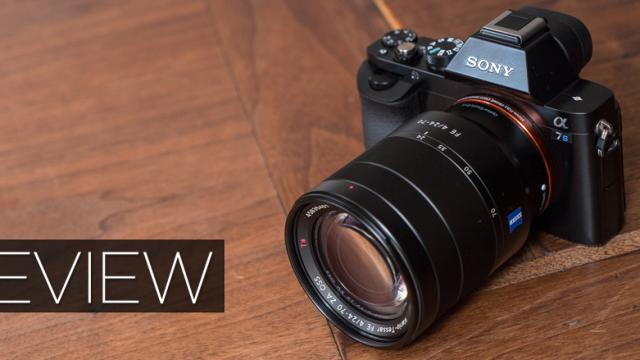Sony’s moves in the field of consumer electronics can seem genius at times, and baffling at others. Its new full-frame mirrorless camera, the A7s, is a little bit of both. It’s a camera that looks and functions exactly as previous A7 models, but with a few very specific and exciting features especially suited to video shooters.
What Is It?
A $2799 (Australian RRP) full-frame mirrorless camera with a special 12-megapixel sensor that is designed to enhance video recording and low-light performance. Other than the sensor and some added menu options, the camera is identical to the A7 and A7r in looks and handling. With that said, this review will focus mostly on only the new features of the A7s. For more about the A7 and A7r, see our review here.
Why Does It Matter?
It doesn’t matter that nobody has 4K TVs or computer monitors yet; camera makers are shoving 4K down our throats fast so that we’ll have things to watch when they do show up. With the Lumix GH4, Panasonic recently proved that 4K can be manageable and beneficial even for output at 1080p. Since keeping up is the name of the game, every other major camera company — Sony included — is chasing the same spec. The A7s records 4K, but only to an external recording device via micro HDMI.
It’s also worth mentioning that the mind-boggling low light performance of the A7s puts it in a class by itself. To have these features in a compact mirrorless camera is pretty special.
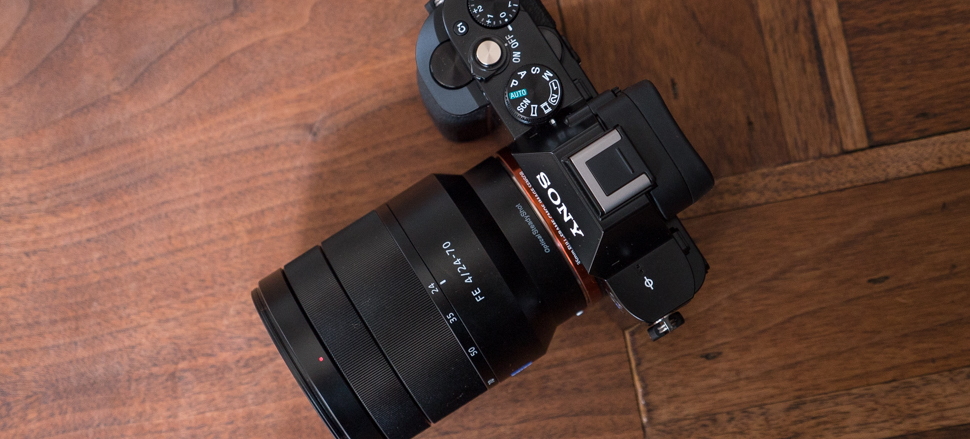
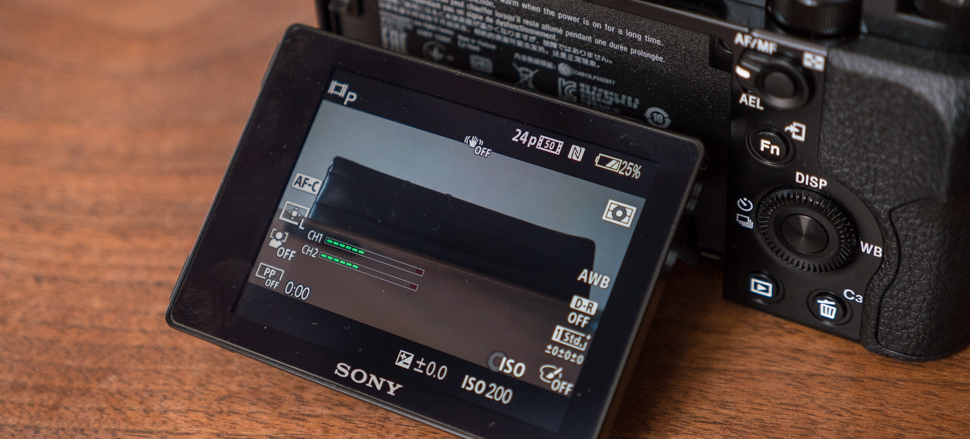

Design
We were pretty keen on the aesthetic of the Alpha full-frames when they debuted, and nothing has changed here. In a nutshell, its angular lines are a nice break from the retro-inspired cameras that are everywhere.
The baffling thing is how Sony didn’t change a darn thing to make the camera more friendly to the video users it so obviously is targeting. The idea was clearly to bring its new sensor to market as fast as possible and simply re-use the body of the A7/A7r. There are a lot of things could be improved for a more functional design for video shooters, like better placement for the video record button, or some buttons re-mapped to make video settings more easily accessible. As it stands, the A7s looks good and feels decent, but isn’t optimised for its greatest strength.
Using It
The A7s only gives you 12 megapixels of resolution, compared to the 24 megapixels of the A7, 36 megapixels of the A7r, and mostly somewhere in between for other modern full-frame DSLRs. What does that mean in practice?
If you print your photos, you will still be able to make really excellent quality 8 x 10 prints, and still good quality 11 x 14 prints. Larger than that and you will notice a drop off in quality. If you never print your photos, the A7s will merely limit your cropping capabilities in post. But chances are you only crop to fine-tune your work, which is still possible with 12 megapixels to work with. In the end you will have to do a serious assessment of what you want to do with your photos to determine wither 12 megapixels is enough.
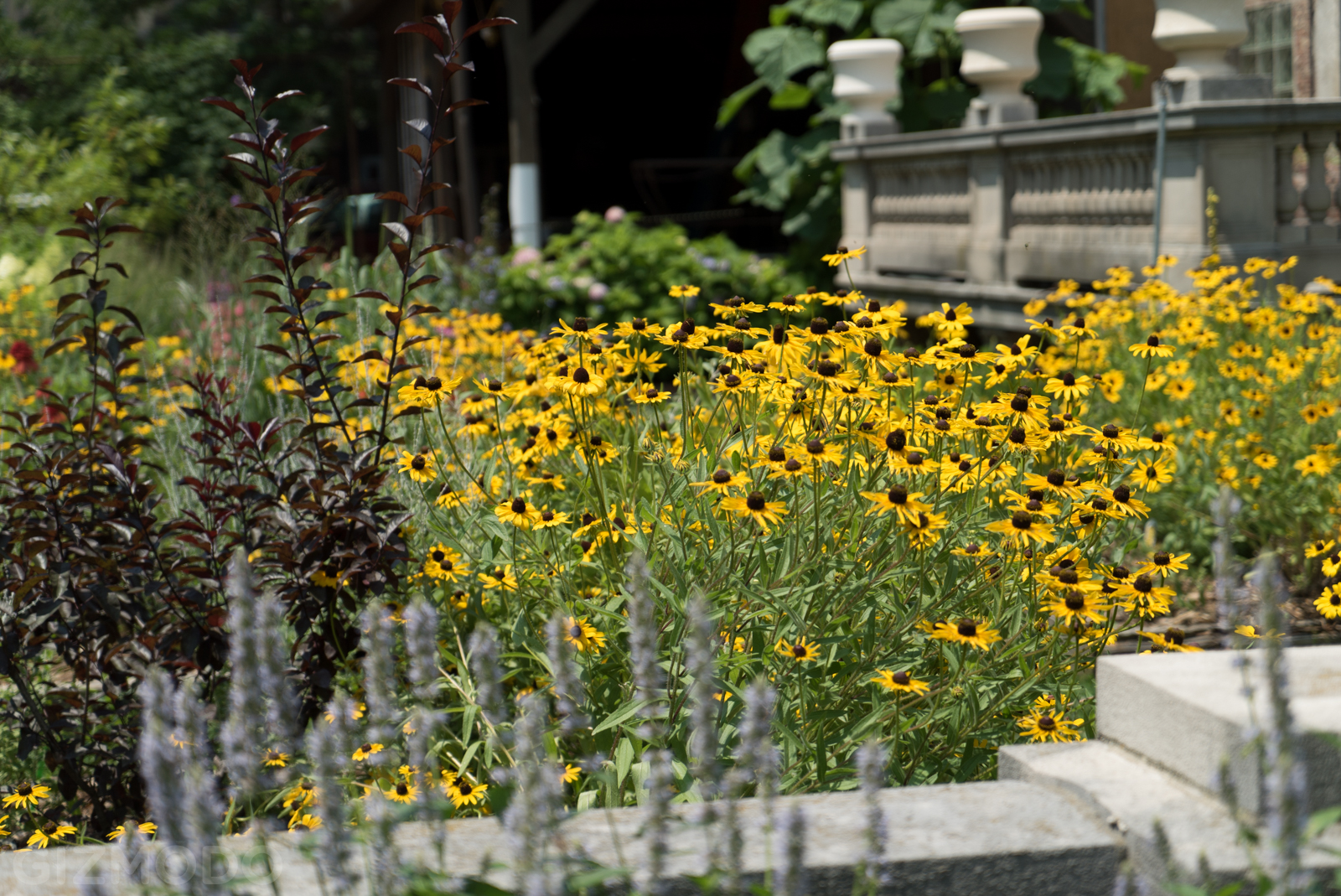
When it comes to image quality, the A7s is fantastic, and the low light performance is simply staggering. The ISO range goes from 100 all the way up to 409,600. You’re not going to want to shoot at the top end of that; the results are just unusable for most conventional purposes. But shooting between 3200 and 12800 are going to give you much cleaner results than most cameras.
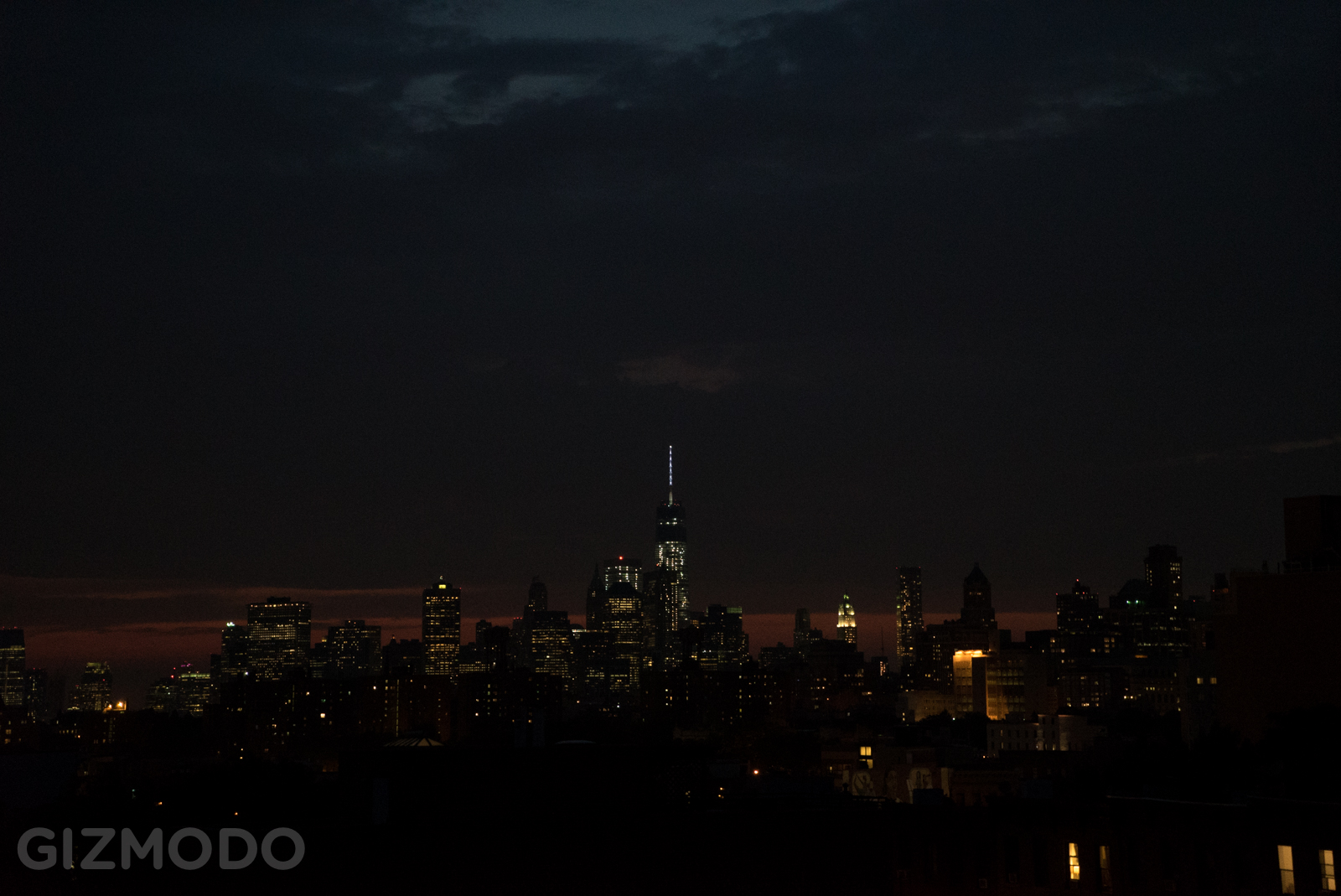
Above is what my eyes actually saw, at ISO 8000
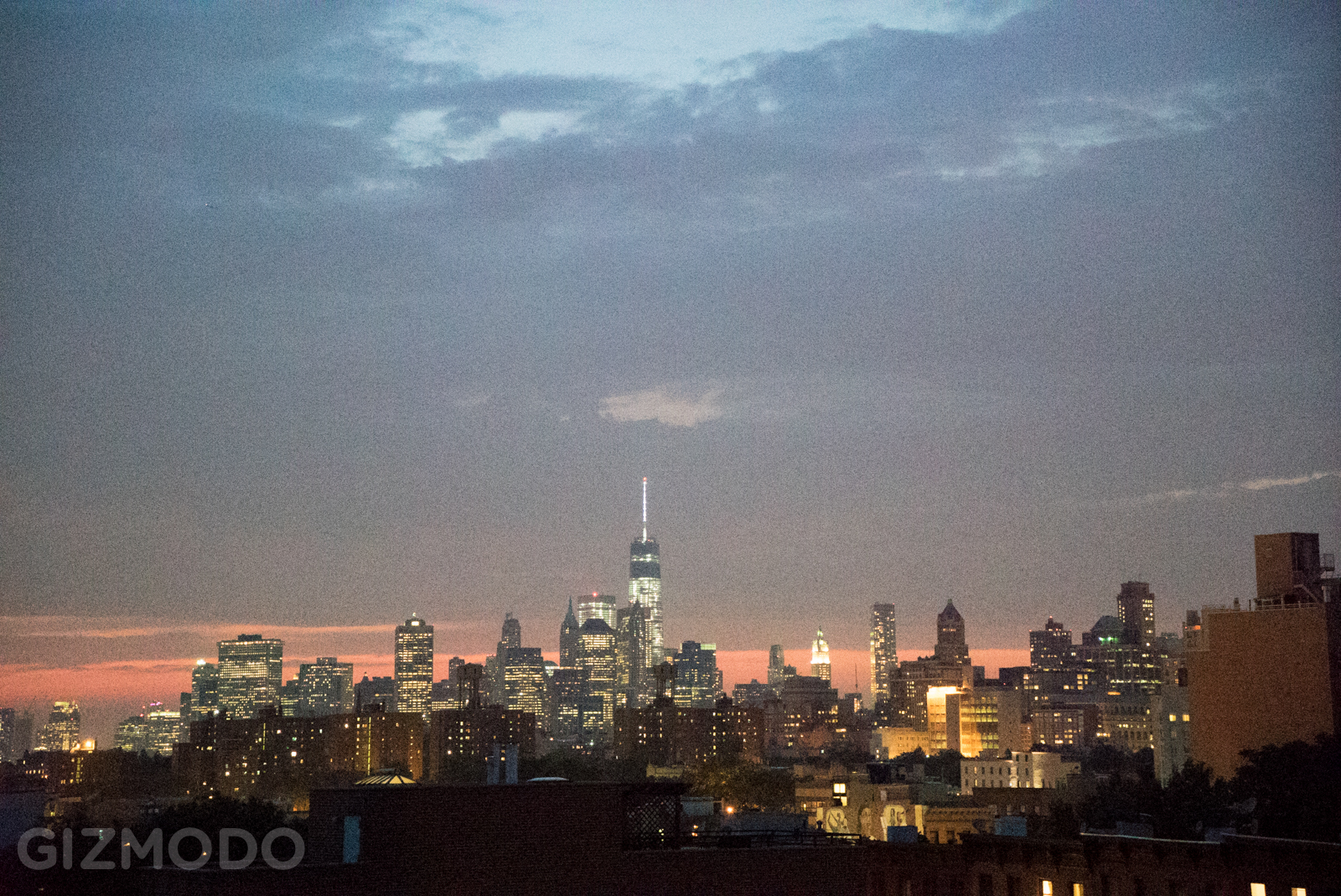
Here’s the scene at ISO 128,000. Approaching the line of usable or unusable.
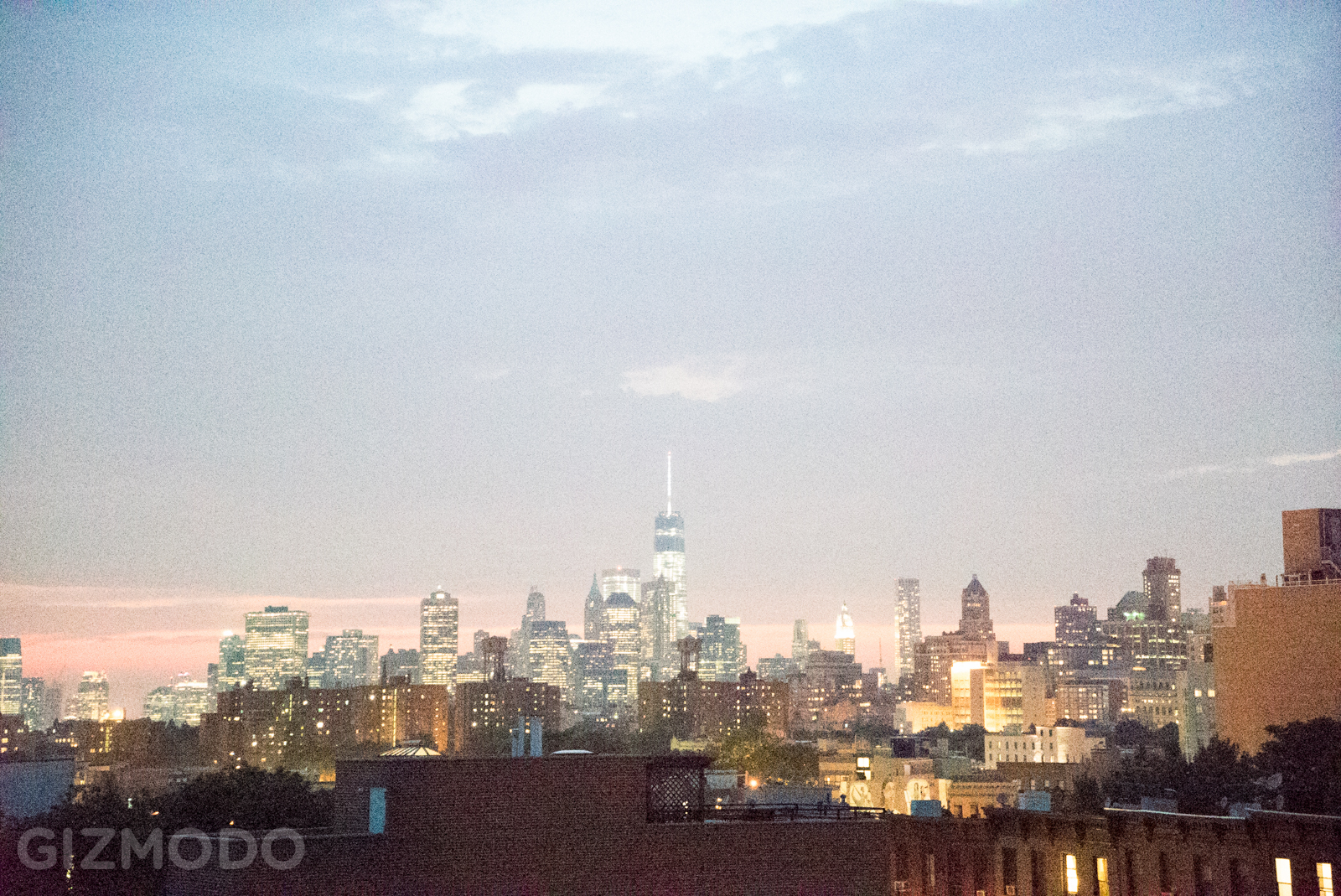
This is the A7s’s maximum ISO of 409,600.
Let’s not underestimate the importance of low light capability. It’s one of the most useful qualities of a camera to many videographers and photographers. It provides flexibility, and allows you to shoot in places you may not have been able to with a lesser piece of equipment. For pros, budgets are tight, and lights are not always an option. You need a tool that will provide a decent image in dim situations, and the A7s provides that better than any other.
As for video, I’m not sure I would go so far as to say that the A7s is a video camera at heart. Its ergonomics are still better-suited for stills. Its body and controls are that of a still camera with video functionality tacked on. But its video capability is certainly what is exciting a great many people.
Notes about our video: Ignore the colour difference in the A7s vs 5D Mark III comparison. We inadvertently used different colour profiles. Also, web compression degrades quality. If you are a Vimeo Plus member, you can download the original file for better quality.
Out of the box, you can record video at 1080p in 24, 30, or 60 fps, with 120 fps topping out at 720p. Sadly, you need to purchase an external recording device to shoot in 4K. That really sucks, but luckily the 1080p is really nice; better than most competitors, in fact, because the video signal comes from a full-pixel readout of the sensor. That virtually eliminates the gross moire and aliasing patterns you see in most consumer video cameras. It also uses the XAVC codec at 50Mb/s, which produces clear, crisp video quality.
Here are stills comparing the Canon 5D Mark III with the A7s. They are both cropped in 250 per cent on the image. Click “expand” to see them full size. Also keep in mind that our picture profiles did not match, thus the colour disparity.
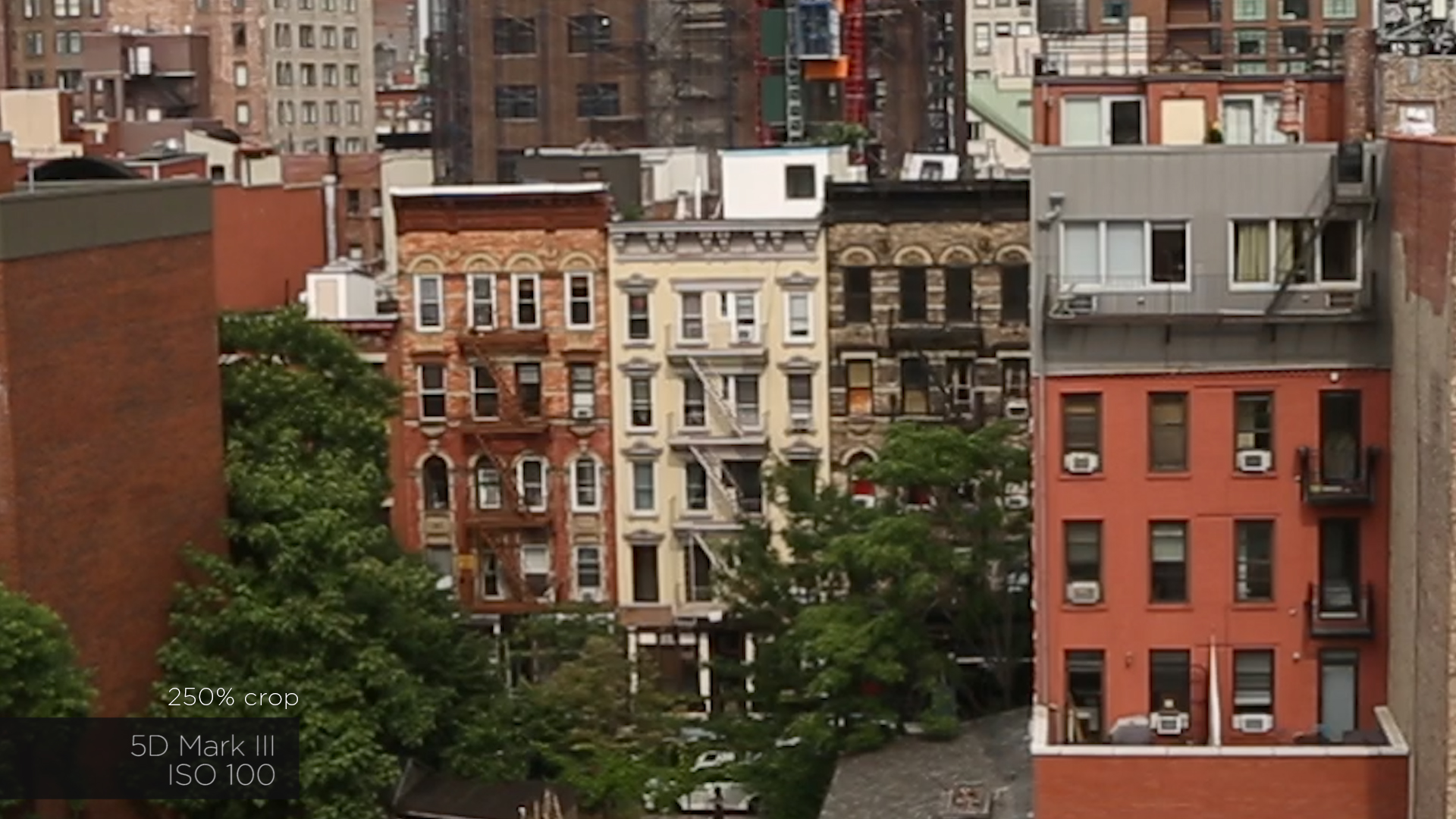
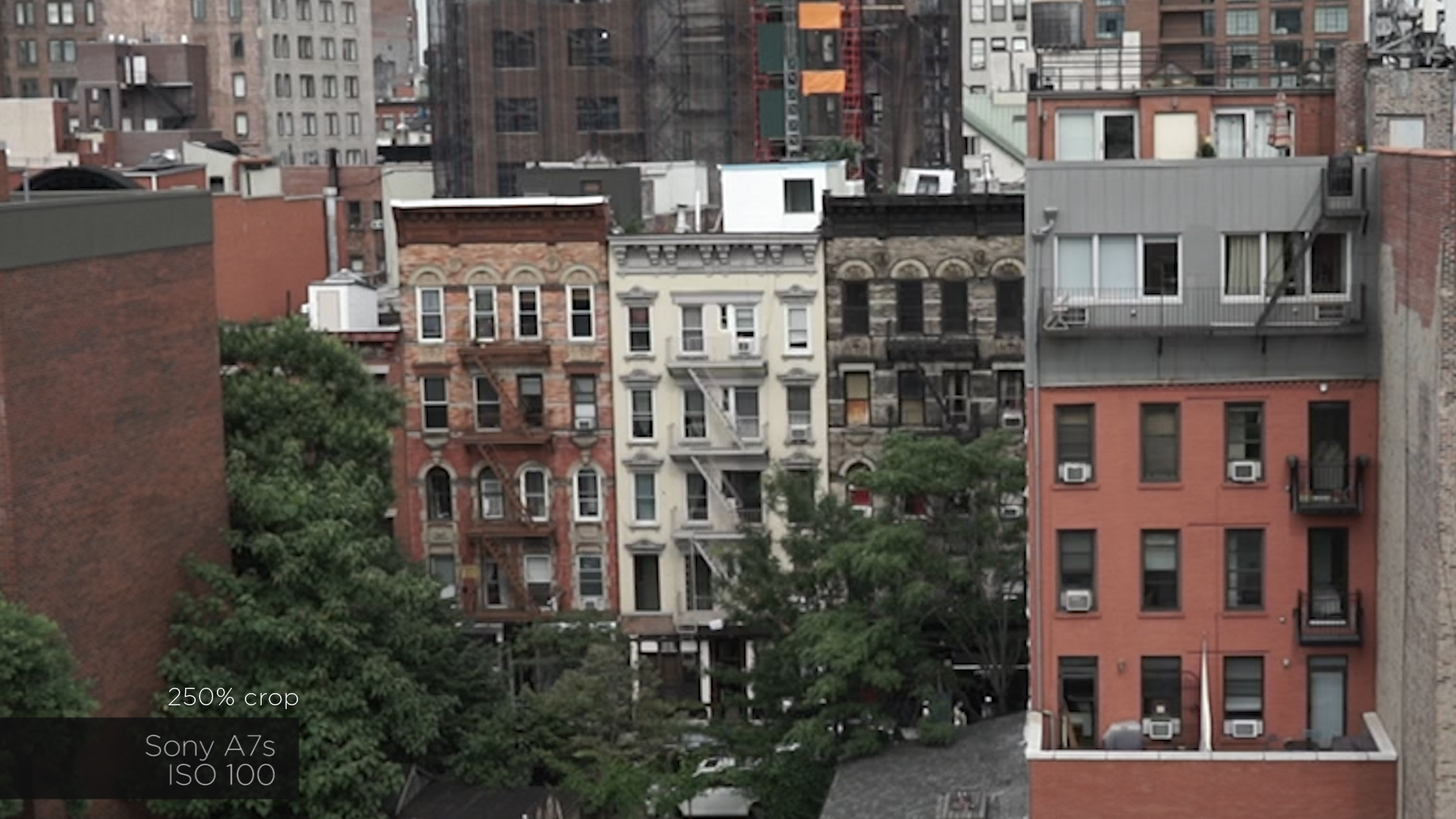
External recorders that can squeeze 4K footage out of the A7s have not yet hit the market, and it’s a serious bummer that you can’t record it right in the camera you just paid $2800 for. The cost and convenience factor definitely weigh in favour of the Panasonic GH4, which records internally to regular SD cards, for around $1999. However, even with the additional cost of a recorder that costs, say, an extra grand, you will be looking at a unique, relatively cheap setup for recording full-frame 4K video.
For now, 1o80p will have to suffice, and it does suffice for most people’s use. The Full HD signal from the A7s beats the Canon 5D Mark III in the detail and noise department. The difference isn’t insane, but it’s enough to matter. There used to be exactly zero options for a full-frame camera that shot video rivaling the 5D Mark III. The A7 and A7r shot mediocre video at best, and Nikon’s full-frame DSLRs suffered from moire and aliasing issues. 1080p on the A7s doesn’t come close to the clarity of the GH4’s downscaled 4K, but it’s still good, especially when you add a bit of sharpening in post. Here is a comparison:
Within the software of the A7s are some really nice tools for video shooters that did not exist on the A7 or A7r. The most important are the picture profile adjustments. You can choose from a number of flat profiles that take advantage of the camera’s dynamic range and give you more flexibility when colour grading your footage. You can also go in and adjust each profile to your liking. We found the Cine4 gamma setting to be a nice medium between the more contrasty basic profile, and the super-flat S-log2, which introduces too much noise into the image.
The only major video flaw that Sony was not able to remedy in the A7s is rolling shutter. It is pretty bad. One handy tip, discovered by Philip Bloom, is that if you use the A7s in APS-C crop mode, the rolling shutter is much less pronounced. That kind of defeats the purpose of the full-frame field of view, but it can be handy for specific action or moving shots.
One thing that should give pause to possible adopters of the A7s is the scant selection of full-frame E-Mount lenses (FE) currently available. Yes, you can use many third-party lenses, but adapters can be expensive and many users have a reasonable desire for quick AF and image stabilisation. There are only two Sony FE lenses that fit this description. The sort of crappy 28-70mm f/3.5-5.6 lens, and the higher quality Zeiss 24-70mm f/4 lens. The Zeiss is fine for video but really expensive at $1500. There are no ultra-wides, no primes with image stabilisation (there are only two primes total!). Sony A-mount lenses will work with an adaptor, but the good ones are quite large and heavy. Hopefully the demand for the A7s will force Sony to ramp up lens development for the FE system, because it has been underwhelming thus far.
The other nuts and bolts of the A7s are mostly the same as the A7. AF is pretty good but not fantastic, battery life is atrocious (but at least the A7s comes with two batteries). The menu system is the same, with the added Picture Profile options and video settings. One significant change is the shutter of the A7s. You have the option of shooting stills with the fully electronic shutter used to record video, making the camera completely silent. It’s really great for street work or when you must go unnoticed, though you do run the risk of the electronic shutter distorting the image when shooting subjects moving rapidly across the frame.
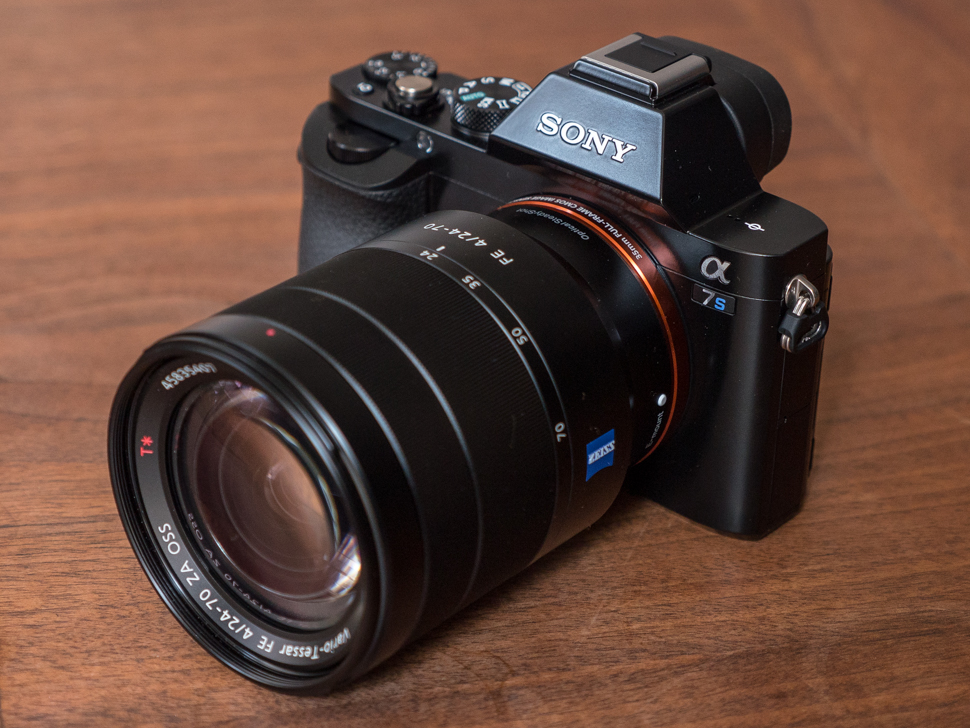
Like
You can’t find full-frame video of this quality for this price anywhere else. And you can’t find better low light performance, period. It all comes down to those two, very powerful, facts. With an external recorder shooting 4K, the quality will be even better.
No Like
For stills, 12 megapixels is going to turn off many shooters. The camera was clearly not designed for video, and some poor ergonomics and control layout decisions speak to that. Native lenses provide limited options at launch. Battery life is poor. Sony just wasn’t able to squeeze in internal 4K recording, which is now appearing in rival cameras, like the GH4.
Should You Buy It?
If you are a video shooter looking for something that is better than Canon full-frame video quality at comparable price, you should absolutely consider the Sony A7s. Not only is the footage nicer, but it is future-proof if you’re willing to invest in an external recorder sometime down the line. For hybrid still/video shooters, the A7s presents a bit of a dilemma. 12 megapixels is a tough ask if you want to make big prints. But it’s not something to get hung up on if printing isn’t your cup of tea.
The biggest wish I have is that Sony held off for a while and actually put its sensor tech into a device that was more well-thought out for video shooting. The A7s is a great demonstration of technology powerful enough to make you forget about its flaws. The Panasonic GH4 has more tools, more options, more usability — with 4K built right in, and to spectacular effect. But the micro four thirds sensor of the GH4 offers its own compromises: low light is not very good, shallow depth of field is constrained, as is field of view. But here’s the real kicker. The A7s will literally increase the possible scenarios in which you can get a good shot, by way of low light performance. No amount of 4K, 8K, or how ever many K can accomplish that.
It’s a tough choice, no doubt, with no objective winner. The all-around loser in this battle is Canon, which is rapidly losing any advantage it once had in video. Hopefully it can muster something in the coming months that will make their tools compelling options once again. In the meantime, Sony has come up with a more than viable alternative. [Sony]
